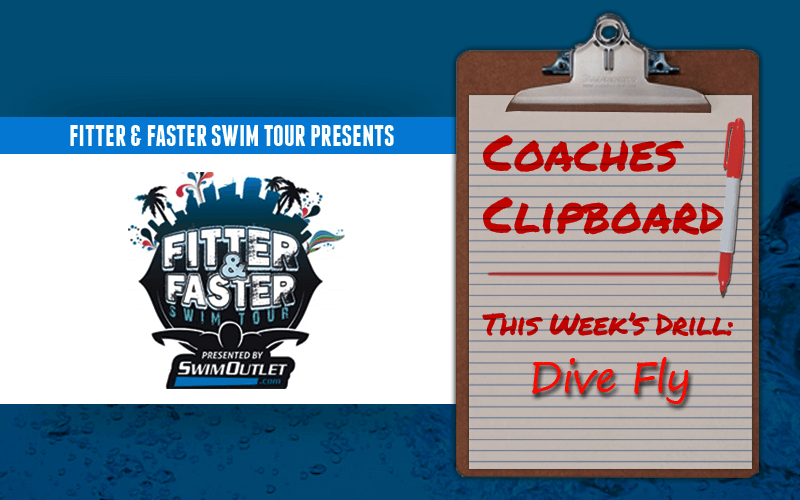Fitter And Faster Swim Drill Of The Week: Dive Fly

Welcome to the “Swim Drill of the Week” sponsored by The Fitter and Faster Swim Tour presented by Swimoutlet.com. Swimming World will be bringing you a drill, concept, or tip that you can implement with your team on a regular basis. While certain weeks may be more appropriate for specific levels of swimming (club, high school, college, or masters), Drill Of The Week excerpts are meant to be flexible for your needs and inclusive for all levels of swimming.
This week’s drill is Dive Fly for butterfly. This drill works specifically on distance per stroke and focusing on developing the integrity of the legs through longer butterfly repeats. Rather than working specifically on speed and power, this drill instead focuses on being long and steady with consistent length in the stroke.
The drill itself involves alternating between kicking underwater and single strokes on top of the water. Pushing off the wall, swimmers will do a normal breakout with a single butterfly stroke. After each stroke of butterfly, swimmers will submerge slightly underwater in a streamline and complete three dolphin kicks. After the third kick, swimmers will breakout again and take a single stroke before completing three more kicks.
The purpose of the “dive” in between each stroke is to stay long and engaged through the core and keep a consistent tempo with the legs. One of the biggest mistakes people make when swimming butterfly is focusing just on having a powerful arm strokes and ignoring the power they can get from their legs. This is what leads to a “up and down” butterfly that is neither pleasant to swim or watch. When doing this drill, make sure your swimmers are riding the wave forward into each underwater kick sequence while keeping their heads down and arms long in front.
It will be common to see some swimmers focusing on the wrong things in this drill. Instead of trying to stay long, use their legs, and keep a good body position, you may see swimmers try to muscle through the single stroke and take short, choppy kicks underwater. Again, emphasize that swimmers should be using their whole bodies to move efficiently through the drill.
You can also add variations to this drill to make it easier or play with tempo and stroke control. Adding fins is great for beginners as it helps them focus on actually using their legs to drive forward with their stroke. Alternatively, you can add 2 or 3 strokes between kick sequences, or an ascending pattern (i.e. – 1 stroke/3 kicks, 2 strokes/3 kicks, 3 strokes/3 kicks) to bring a little variation to the drill and challenge swimmers to stay efficient as the drill changes. Happy swimming!
All swimming and dryland training and instruction should be performed under the supervision of a qualified coach or nstructor, and in circumstances that ensure the safety of participants.



